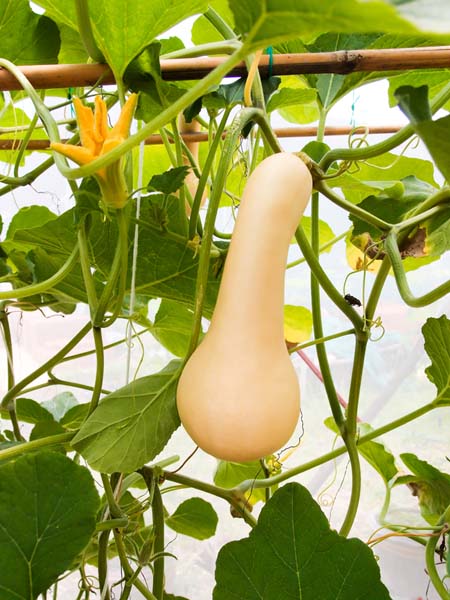Growing vine crops doesn’t have to be hard. And if you live an area where they do well, you can get yourself a nice crop of plants such as pumpkins, squash, watermelons, and cucumbers, just to name a few. The first step that you need to take is preparing the soil. Getting off on the right foot is key with a successful garden for growing anything, and vine crops are not an exception. The gardening tools that you will need to prep the soil for vine crops are going to be fertilizer and/or organic matter like compost, a plow or till to mix it into the pre-existing garden soil, and of course the seeds you intend to plant, as well as a hose or watering can to properly water and care for the vine crops.
Prepping the Soil
The first step in preparing the soil is to choose the area you intend to plant in. Since vegetables that grow on vines take up a lot of space when they grow, you will want to train them to grow on to a trellis if you have limited space. In the space that you have set aside, you will want to prepare the soil just for the specific types that you will be growing.
Test the Soil
The next step is very important, and is often something that eager gardeners want to skip. That is testing the soil to determine what kind and how much fertilizer it needs. It is important to look at the phosphorus rating. If it is high, you’ll want to choose either low phosphorus or phosphorus-free fertilizer when you are preparing the soil. Getting the wrong type of fertilizer, or one that is high in phosphorus when your soil is also, can result in phosphorus buildup in the soil. This can even lead to pollution of rivers, streams and lakes that are nearby. Don’t choose a fertilizer for your soil prep that is designed to kill weeds either, because this will harm your vine crops.
Add Compost or Other Organics
In addition to choosing the proper fertilizer, you can use compost. Adding this organic matter to lighter sandy soils or heavier clay soils can help improve the soil structure of the even more. This will be very good for the seedlings as well. Anytime that you use fertilizer or organic matter when preparing soil, it is very important that it all gets tilled or plowed into the soil really well before any planting is done. If you plan to plant watermelons, a sandy loam soil will be the best choice. But other vine-based vegetable plants can stand a heavier soil.
Planting and Spacing
Now that you have completed the soil prep, your seeds or seedlings can be planted directly into the newly prepped soil. Since these types of plants take up a lot of space, it is a good idea to space cucumbers a foot apart, watermelon two feet apart, and plant pumpkins and squash two to three feet apart from one another. Spacing them properly is just as important as the soil preparation.
Care and Maintenance
There are many components that can help to ensure that a vine crop does. These are sensitive varieties, and that is why preparing the soil properly and planting them to their best potential is so important. Equally important is the care that they receive while they are growing. In general, these plants thrive in hot weather.
On average, they require a minimum of one inch of water from either irrigation or rainfall each week of the growing season. It is important to soak the soil thoroughly when you water them. If you are watering sandy soil, you will want to water more often. But each time that you water, you should lessen the amount of water used. In addition to watering them with care, because you didn’t use weed killing fertilizers when you prepped the soil, you will need to take care in keeping up with weed control. Since the roots of the vines are so close to the top of the soil, whenever you cultivate to remove weeds, you must be very careful and keep your cultivation shallow to avoid tearing out the plants. When this proves to be too difficult, remove large weeds by hand. Although these plants take some unique care, the payoff of wonderful fresh foods is well worth the effort. If you live in an area where these types of plants do well and have always wanted to grow them, you should give it a try! The care that you put into vine crops can be very, very rewarding. What types of vine plants are you growing in your garden this season? Let us know in the comments below! And if you found this guide valuable, then check out some of our others:
Extend the Season and Keep Pests Out with Floating Row Covers How to Make Easy DIY Raised Beds Guide to Growing Heirloom Fruits and Vegetables
© Ask the Experts, LLC. ALL RIGHTS RESERVED. See our TOS for more details. Uncredited photos: Shutterstock.
